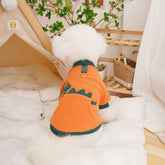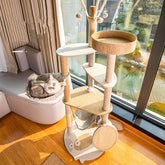Rebuilding the Bond: A Comprehensive Guide to Healing Your Relationship with Your Cat
Table of Contents
- Key Highlights:
- Introduction
- Recognizing the Signs of a Broken Bond
- Understanding Why the Bond Was Broken
- Rebuilding Trust One Step at a Time
- Respecting Your Cat’s Personal Space
- Reintroducing Yourself Through Positive Associations
- Using Play to Reignite Connection
- Mending Through Gentle Touch and Petting
- Communicating With Calm and Patience
- Providing Predictable Routines
- Offering Quiet Companionship
- Recognizing and Respecting Your Cat’s Unique Personality
- Using Treats and Rewards Effectively
- Addressing Fear and Anxiety in Your Cat
- Repairing After Unintentional Harm or Trauma
- Engaging in Interactive Feeding
- Incorporating Clicker Training for Confidence
- Creating a Safe and Stimulating Environment
- Being Mindful of Body Language
- Knowing When to Seek Professional Help
- Celebrating Progress and Staying Hopeful
Key Highlights:
- Recognizing the signs of a fractured bond and understanding the underlying causes can initiate the healing process for cat owners.
- Gradually rebuilding trust involves respecting your cat's space, creating positive associations, and engaging through gentle play.
- Creating a safe and stimulating environment is essential for minimizing anxiety and fostering a stronger bond.
Introduction
The relationship between humans and their feline companions is often cherished and complex. Cats, known for their independence and unique personalities, can sometimes display behavioral changes that indicate a strained connection with their owners. Whether your cat has started to hide, avoid contact, or react defensively, these changes can be distressing. Just as with any relationship, mending the bond with your cat requires understanding, patience, and consistent effort. This guide delves into the depths of feline psychology and provides practical strategies for repairing and enhancing your connection with your beloved pet.
Recognizing the Signs of a Broken Bond
Understanding when and how your bond with your cat has faltered is the first step toward healing. Clear signs can manifest, such as:
- Increased Hiding: When a cat feels threatened or insecure, it may retreat to secluded spots.
- Vocalization Changes: A suddenly quiet cat that used to meow or purr may be signaling distress.
- Negative Reactions: Hissing or swatting when approached can indicate fear or discomfort.
These behaviors serve as your cat's language, expressing confusion or fear rather than anger. Paying attention to these signals not only honors your pet's feelings but also enables you to take proactive measures to alleviate their discomfort, ultimately paving the way for healing.
Understanding Why the Bond Was Broken
Several circumstances can contribute to the breakdown of trust between you and your cat. Common triggers include:
- Accidental Rough Handling: Cats can be sensitive to touch, and rough handling can make them feel unsafe.
- Environmental Changes: A loud noise, arguments, or the introduction of a new pet can leave a cat anxious.
- Gradual Changes: Situations that occur over time, such as changes in household routines or social dynamics, can accumulate stress.
Reflecting on your interactions and recent changes in your household environment can help identify the root cause of your cat's distress. This self-awareness boosts your ability to empathize with your feline friend and prevent further trust issues.
Rebuilding Trust One Step at a Time
Reconstructing trust often requires delicate actions and time. Start by allowing your cat the space it needs. Here are effective ways to rebuild your bond:
- Patience is Key: Trust won’t return overnight. Recognizing small improvements in your cat’s behavior can help motivate your efforts.
- Let Them Approach: Sit quietly in the same room, allowing your cat to come to you when comfortable.
Every positive interaction will increase your cat’s confidence in you, reinforcing that you are a safe presence.
Respecting Your Cat’s Personal Space
Cats are inherently independent animals. Respecting their territory is crucial for rebuilding your relationship. Avoid pursuing your cat if it actively seeks solitude. Instead, create safe havens around your home.
- Cozy Retreats: Provide areas where your cat can explore and relax undisturbed. This might include quiet corners or specially designed hiding spots.
- Recognize Boundaries: Allow your cat to dictate the terms of interaction, helping them feel in control of their environment.
By recognizing their independence and fostering a space where they feel secure, you demonstrate your respect for their feelings, encouraging a stronger bond.
Reintroducing Yourself Through Positive Associations
Creating positive encounters can help reshape your cat’s perception of you.
- Utilize Treats: Gradually introduce high-value treats when your cat is near. This teaches your cat to associate your presence with positive experiences.
- Gentle Play: Engage your cat in their favorite playtime activities, reinforcing joyful interactions.
The goal is to knit together a tapestry of enjoyable moments that overshadow any previous negative experiences. Over time, your cat will associate you with safety, care, and fun.
Using Play to Reignite Connection
Play serves as a universal bridge between cats and humans.
- Choose Engaging Toys: Select toys that stimulate interest and encourage interactive play. Feather wands, laser pointers, and crinkle toys can ignite your cat’s instincts.
- Follow Their Lead: Allow your cat to dictate the pace and engagement level of play. Watch for their cues to determine their comfort and willingness to engage.
Play not only acts as a bonding experience but also serves as an outlet for your cat’s energy, helping to reduce anxiety and promote a sense of security.
Mending Through Gentle Touch and Petting
Physical affection plays a crucial role in rebuilding connections. However, it’s essential to let your cat set the pace.
- Reading Body Language: Watch for signs that indicate your cat is receptive to touch, such as coming closer or seeking your hand.
- Gentle Touching: For cats ready to accept physical affection, gentle strokes in favored areas can enhance feelings of trust.
Gradually incorporating touch can help remind your cat that your intentions are rooted in love and safety, diminishing their fear over time.
Communicating With Calm and Patience
Effective communication is grounded in understanding and respect. Felines are highly attuned to human emotions, so mindful interactions can make a significant difference.
- Soothing Tone: Use gentle, low tones to communicate with your cat, demonstrating your calm authority.
- Slow Movements: Avoid abrupt gestures that might frighten your pet. Focus on slow, deliberate movements to increase their comfort.
Being patient and thoughtful in your communication establishes an environment where your cat feels safe, facilitating gradual emotional healing.
Providing Predictable Routines
Routine is paramount for a cat’s well-being. Structure can provide a sense of security and predictability, especially after a stressful experience.
- Establish Routines: Consistent feeding times, regular play sessions, and maintaining a tidy litter area can cultivate a reassuring environment.
- Reassurance Through Familiarity: Cats thrive on known patterns. When they recognize a predictable routine, they’re more likely to trust their surroundings.
This predictable structure instills a sense of safety in your cat, helping them relax and integrate back into a more positive interaction with you.
Offering Quiet Companionship
Sometimes, silence speaks louder than words. Presence can be incredibly reassuring for a stressed cat.
- Be Available: Simply being in the same room, without any pressure for interaction, conveys support and stability.
- Casual Togetherness: Engage in your daily activities—reading, working, or watching TV—while your cat settles nearby.
This quiet companionship nurtures a non-threatening atmosphere, encouraging greater trust and connection to blossom organically.
Recognizing and Respecting Your Cat’s Unique Personality
Each cat comes with its distinct personality traits. Fostering a deeper understanding of their character is essential to rebuilding your relationship.
- Individual Preferences: Recognizing their likes, dislikes, and quirks is pivotal. Tailor your approach to cater to the specific needs of your cat.
- Celebrate Unique Traits: Instead of comparing your cat to others, appreciate their individuality.
By respecting your cat's personality, you forge a profound trust that reassures them of your acceptance and love.
Using Treats and Rewards Effectively
Treats can dramatically assist in building trust, provided they are used judiciously.
- High-Quality Treats: Choose delicious snacks your cat loves and reserve them for special bonding moments.
- Controlled Rewarding: Use treats wisely to promote calm behavior or encourage proximity. Avoid excessive rewards, as overindulgence can be detrimental.
The consistent and careful use of treats can help your cat learn to associate you with pleasurable experiences.
Addressing Fear and Anxiety in Your Cat
Anxiety often lies at the core of a broken relationship. Mitigating your cat’s fears is crucial for repair.
- Use Comfort Aids: Pheromone diffusers, calming music, and soft bedding can help ease stress.
- Environmental Management: Create safe zones and calming spaces, minimizing exposure to sudden disturbances.
Taking these measures can help cultivate a sense of security, allowing your cat to relax and open up to rekindled trust.
Repairing After Unintentional Harm or Trauma
Unintentional harm, such as stepping on a tail or startling your cat, can lead to quick fractures in trust.
- Gentle Apology: Use a calm, soothing voice to communicate empathy; this goes a long way in alleviating your cat’s anxiety.
- Space for Recovery: Allow your cat the time it needs to recuperate emotionally and avoid reenacting any intimidating scenarios.
Through careful and considerate actions, you can help restore any lost trust while reinforcing your commitment to their emotional well-being.
Engaging in Interactive Feeding
Transforming mealtime into interactive moments can also reinforce bonding.
- Hand-Feeding: Prepare small portions and offer them directly to your cat for a rewarding interaction.
- Puzzle Feeders: Use challenging toys that stimulate your cat's thinking and engage them in an enriching activity.
Interactive feeding nurtures trust, mutual enjoyment, and cooperation between you and your cat, enhancing your bond.
Incorporating Clicker Training for Confidence
Clicker training is an effective method not just for dogs but also for instilling trust in cats.
- Positive Reinforcement: Reward desired behaviors with treats and clicks to foster an understanding of expected actions.
- Short Sessions: Keep training light-hearted and fun, creating a relaxed environment for learning.
As your cat becomes familiar with the clicker, their confidence will grow, strengthening your bond through shared accomplishments.
Creating a Safe and Stimulating Environment
Our cats thrive in environments that stimulate their instincts while keeping them secure.
- Diverse Play Options: Invest in scratching posts, climbing structures, and fresh toys to maintain interest and motivation.
- Safety First: Ensure that your home is free from hazards and stressors, helping your cat feel secure.
When cats are content in their spaces, they will be more inclined to seek out social interactions, leading to a stronger connection.
Being Mindful of Body Language
Cats communicate their feelings predominantly through body language. Understanding these cues can guide your actions.
- Learn the Signals: A relaxed tail and slow blinking can indicate comfort, while flattened ears might suggest fear or stress.
- Respond Accordingly: Respect your cat's mood and cues to reinforce the idea that you are attuned to their needs.
By honoring your cat's body language and responding appropriately, you nurture an atmosphere of mutual respect and understanding, instilling trust over time.
Knowing When to Seek Professional Help
If your attempts to mend the bond falter and your cat displays severe anxiety or behavioral issues, consider consulting professionals.
- Professional Guidance: A veterinarian or animal behaviorist can help uncover underlying medical or psychological causes of distress.
- Tailored Solutions: They will provide strategies tailored to your cat’s needs, facilitating effective recovery and rebuilding.
Seeking professional help is a vital step in reinforcing your commitment to your cat’s emotional and physical well-being.
Celebrating Progress and Staying Hopeful
As you work through the process of rebuilding trust, remember that progress, no matter how small, deserves acknowledgment.
- Celebrate Small Victories: Whether it’s a gentle nuzzle, increased interest in play, or just sharing space, recognize these moments as progress.
- Maintain Hope: Keep faith in your bond. The connection you share with your cat can flourish again through compassionate dedication and patience.
Remember that rebuilding takes time. With nurturing attention and unwavering commitment, you can deepen your bond, turning experiences of distress into renewed trust and affection.
This guide aims to provide a comprehensive understanding of the cat-owner bond, highlighting the nuances of feline behavior and emotional healing. By taking these consistent, deliberate steps, you can work toward restoring trust and creating a more fulfilling relationship with your beloved feline companion.





